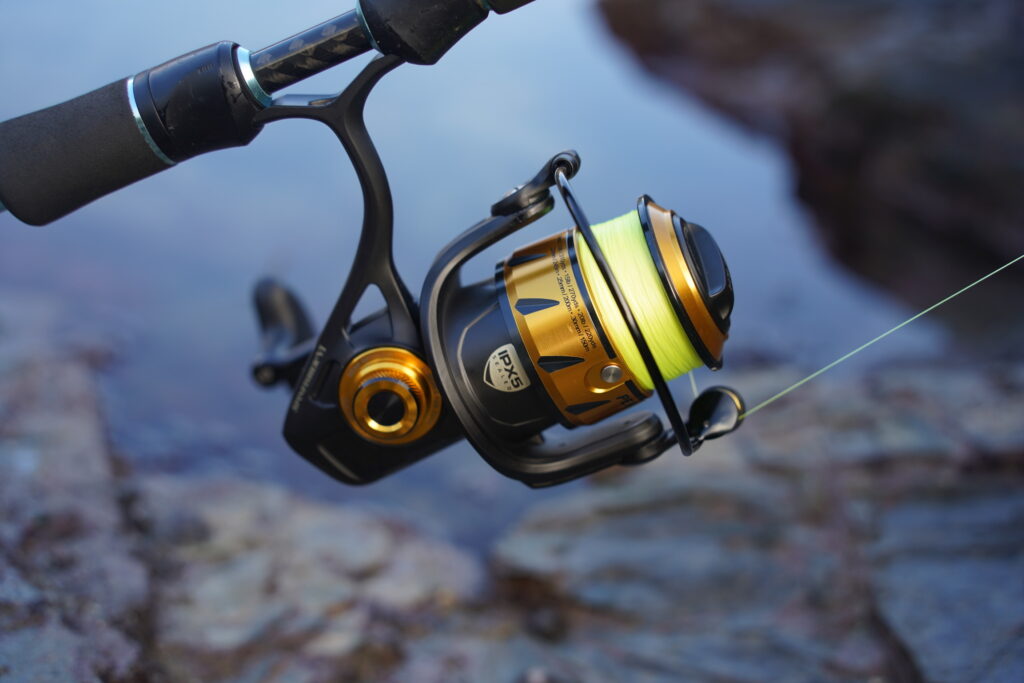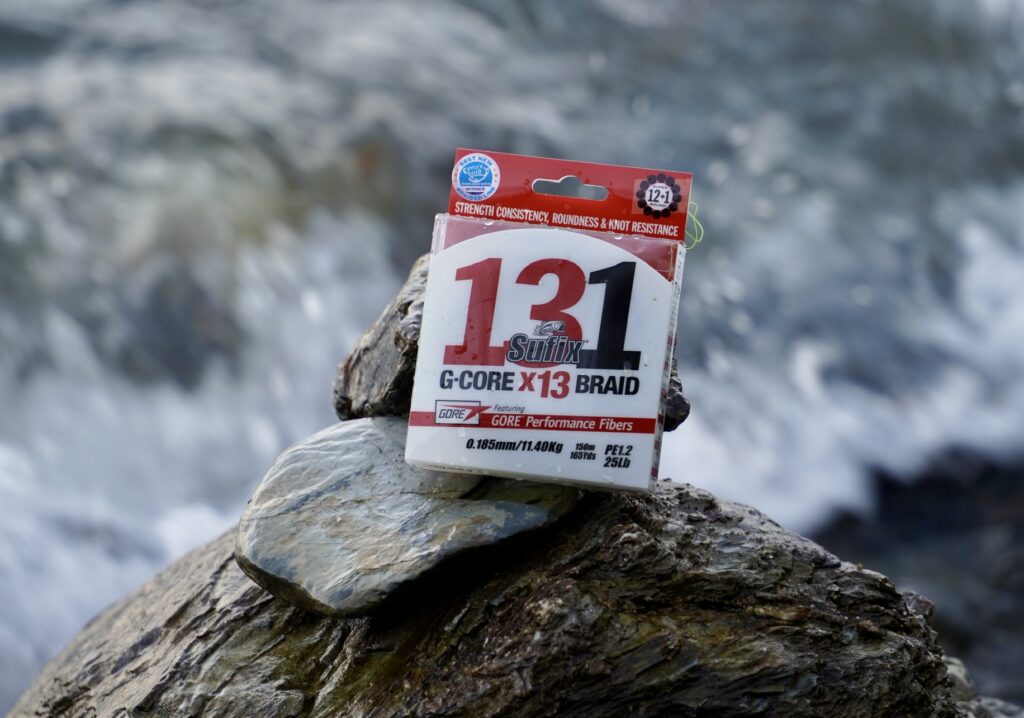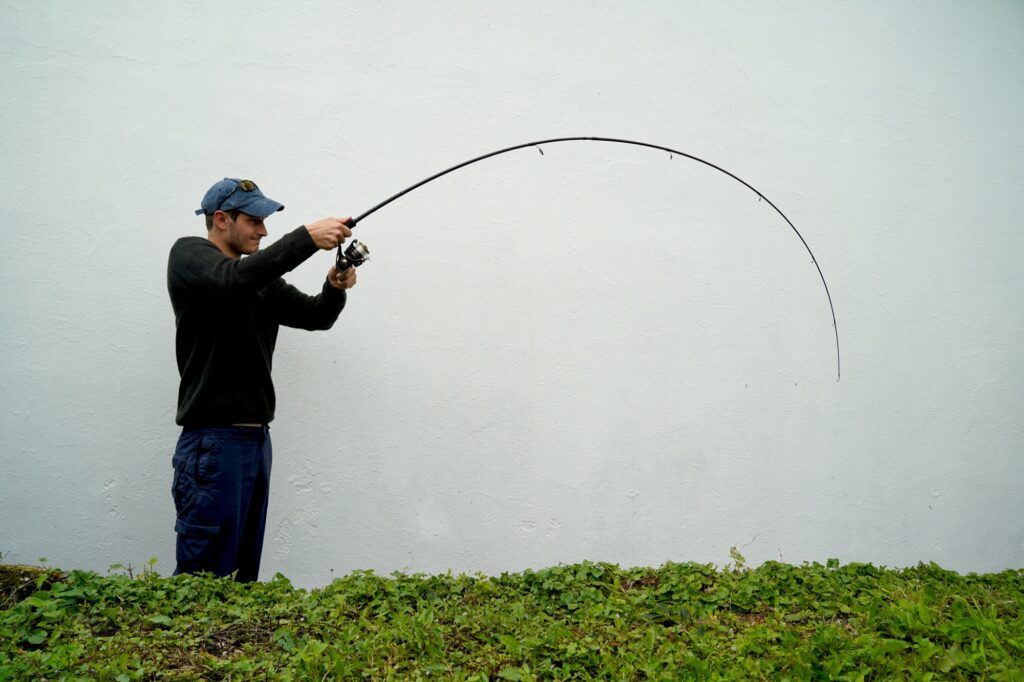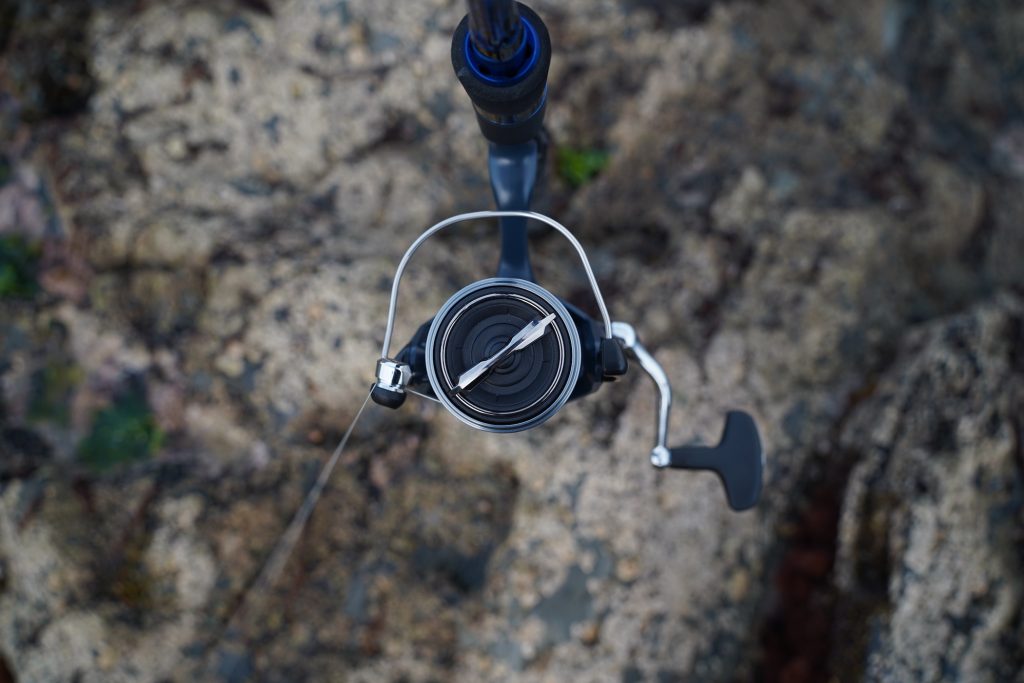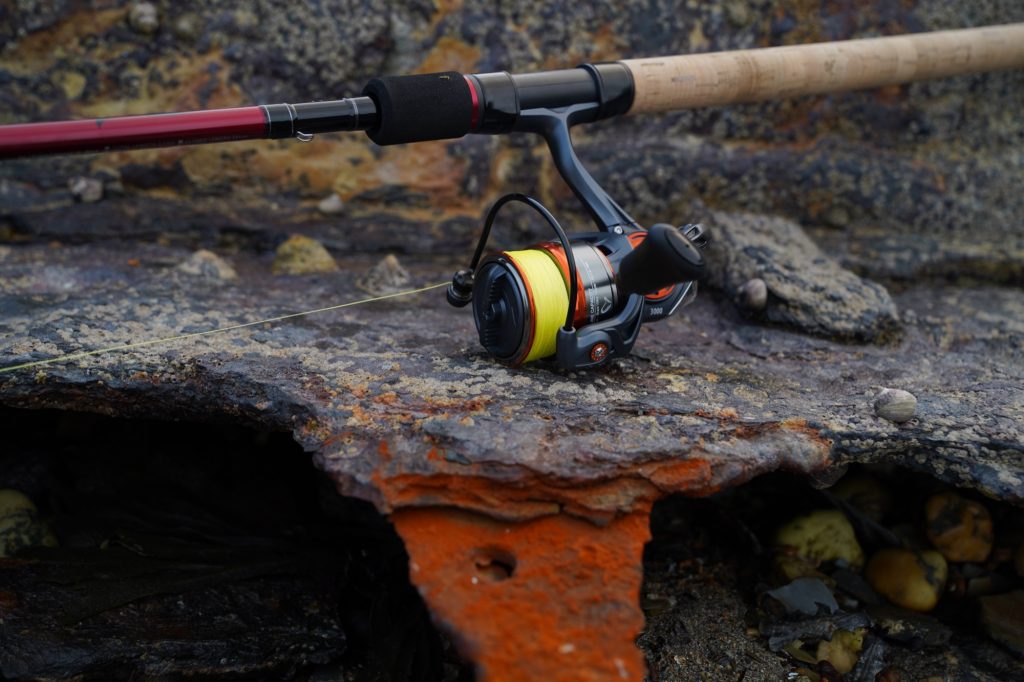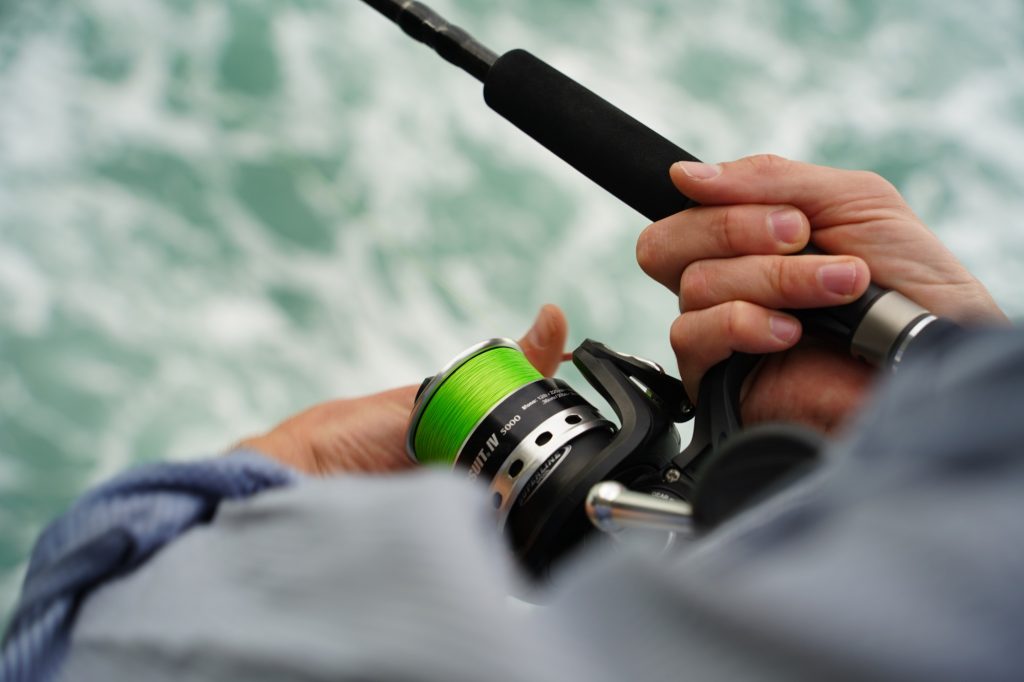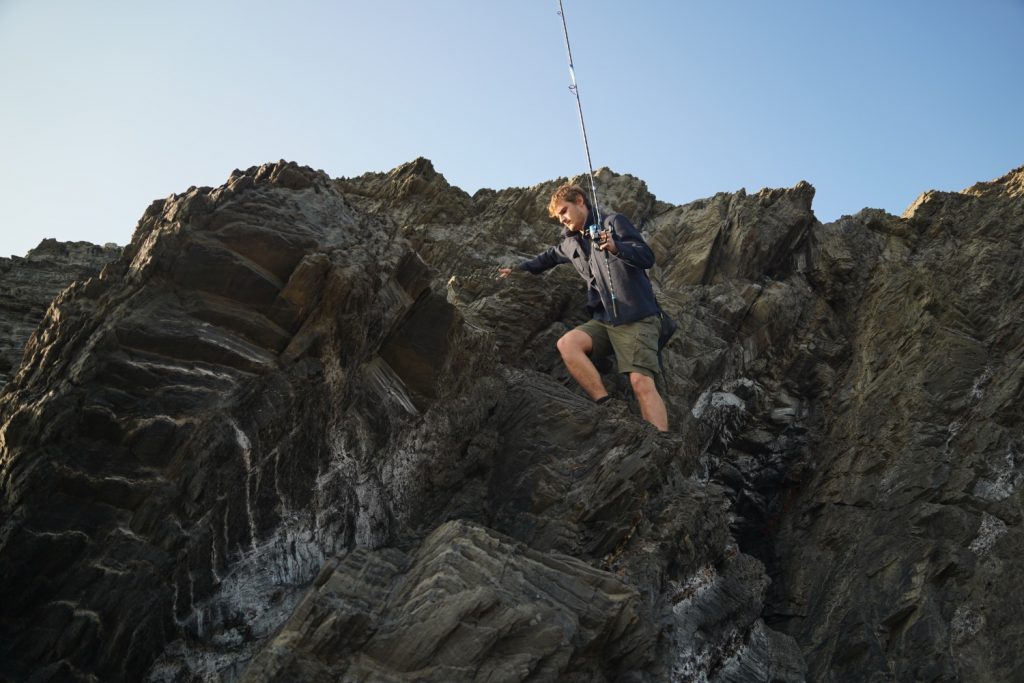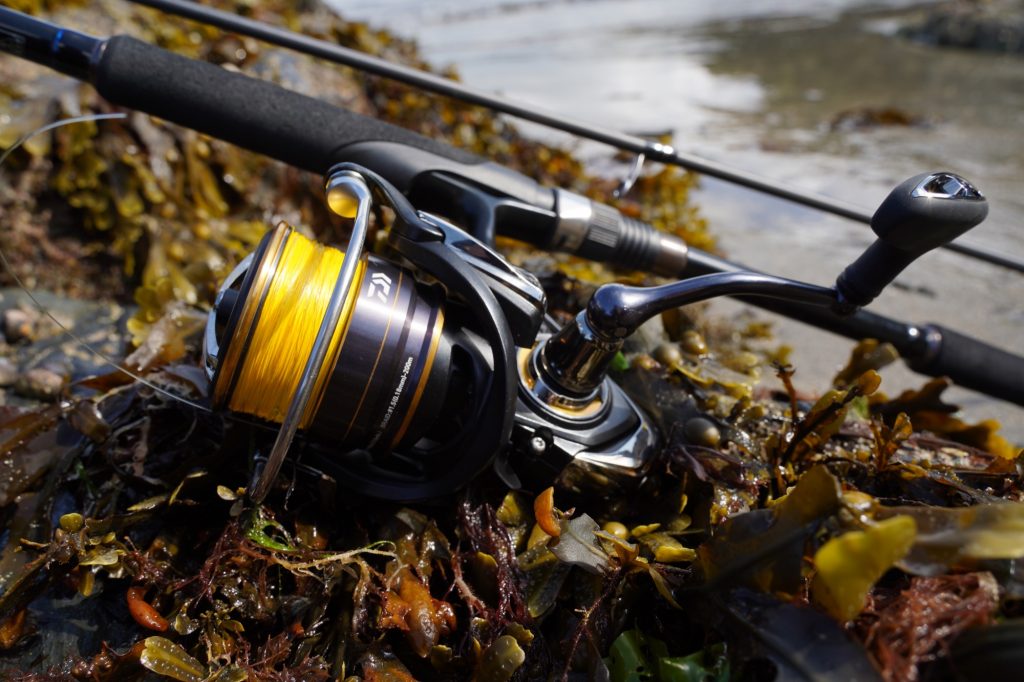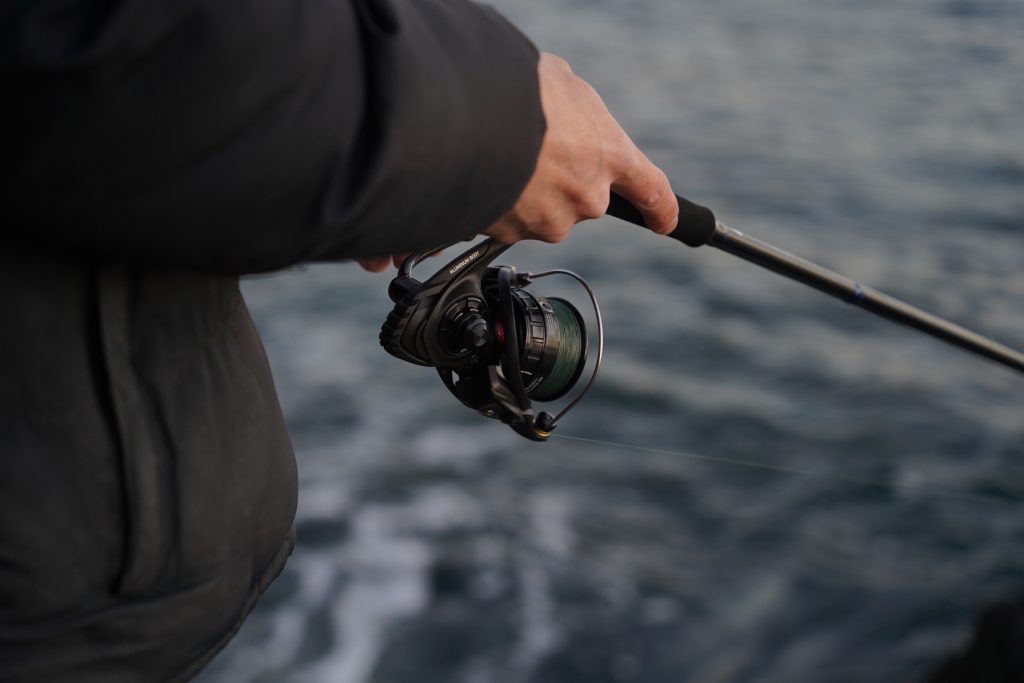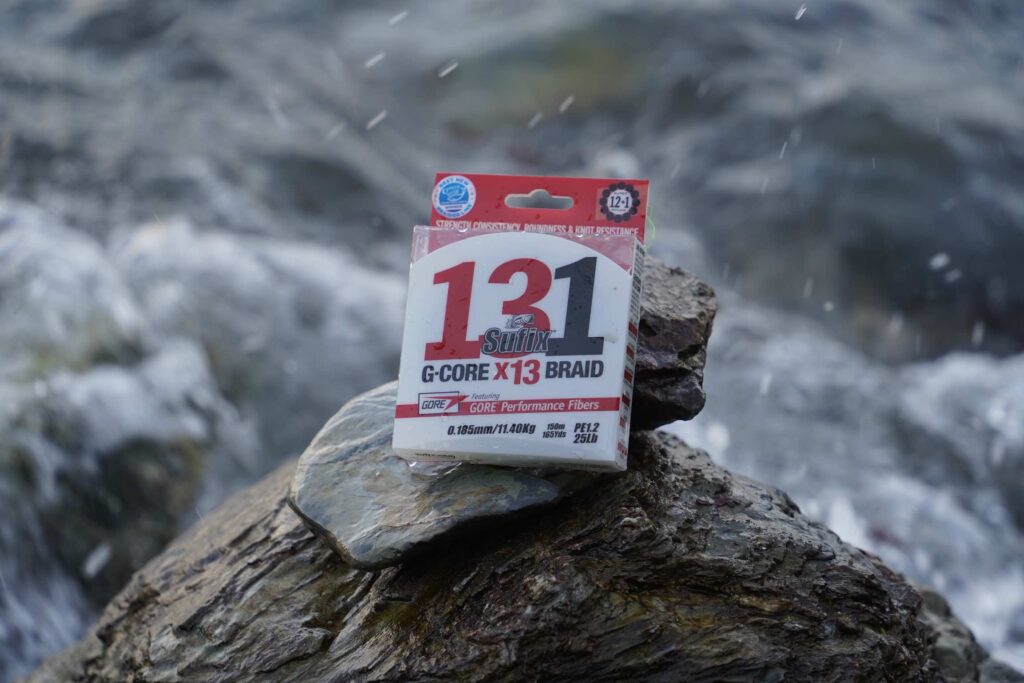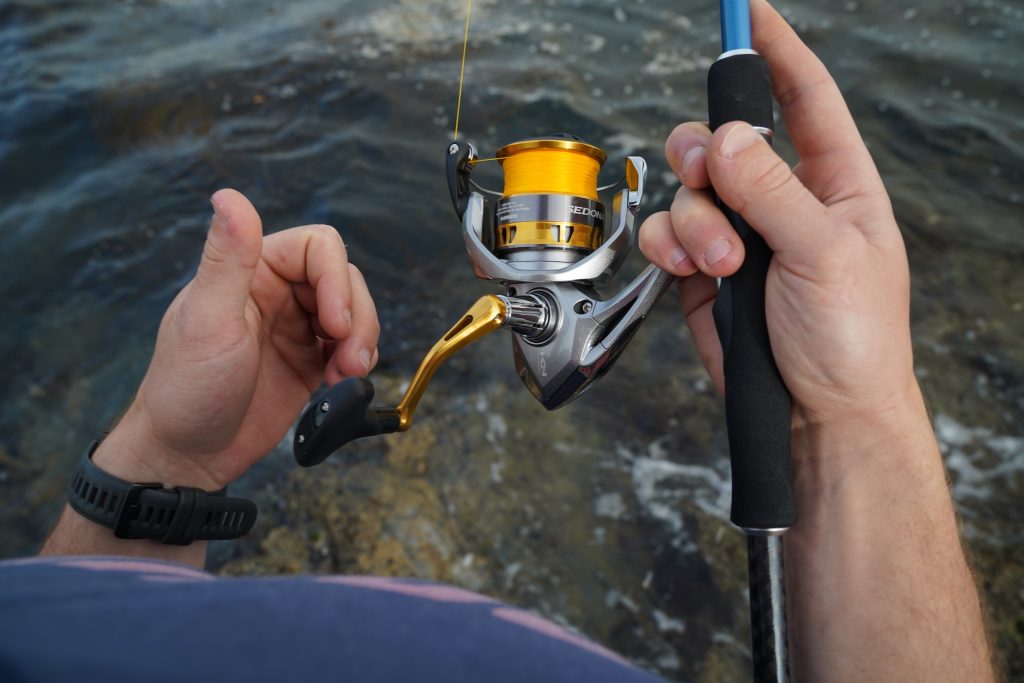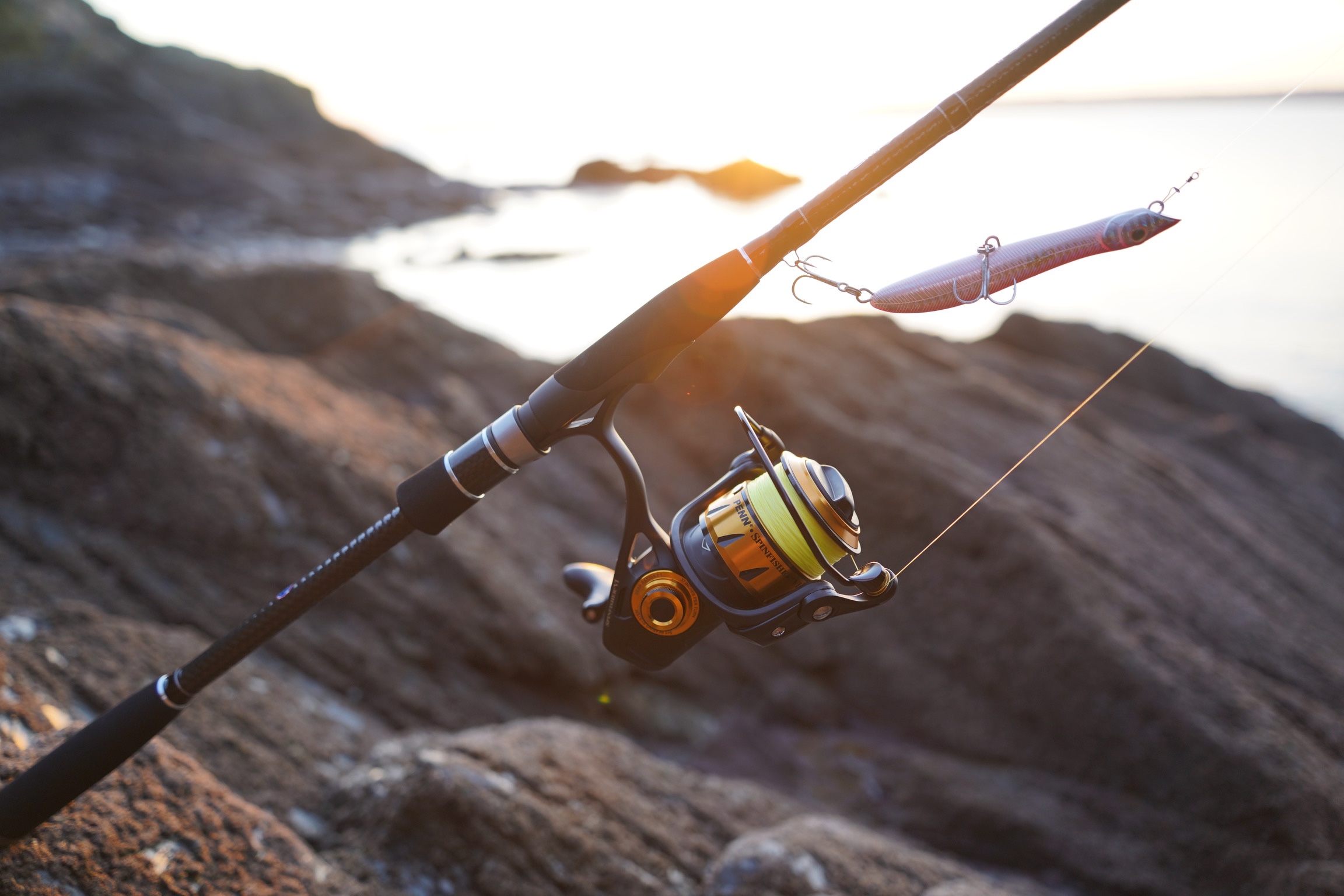
The best spinning reels in the UK
In spinning reels and in life, a flashy appearance is not an indicator of quality. Many reels have soft cogs that will grind to a halt in no time. Brands that used to be known for quality can’t be relied on across the board, you have to look at every reel as a stand-alone product now. Luckily there are extraordinary options out there. We will start with the best budget spinning reels, and then proceed upwards.
FISHMAG is reader supported and earns commission from sales, such as on amazon
| Table of Contents |
|---|
| ▪ Best spinning reels in the UK (£100+) |
| ▪ Spinning Reels under £80 (Penn, Daiwa & Shimano) |
| ▪ Budget spinning reels |
| ▪ Spinning Rod & Reel Combo’s |
| ▪ Understanding Reel Sizes & Specs |
Using a well-made reel means having a smooth fishing experience, with no line lay issues, tangles or frustrations. It allows you to fish with finer lines and braids and in your hand, will feel compact and solid. When a monster bass grabs your lure and runs with it, the drags on decent reels will release line at a consistent rate, preventing snap-offs in those crucial moments.
There are a few fully functional reels for under £30. We’ve listed those first. If you’re going spinning/lure fishing with single lures that weigh under 30g or using leads over 3oz, we recommend spending at least £50. This will ensure your reel can handle lighter braided line or heavier leads. High end reels start at £100. At the bottom of the page we’ll go into more detail about how reels work and what the differences are between them.
Looking for a rod and reel? We have a complete lure fishing set up guide which includes details on getting the perfect sized spinning reel for your rod.
Summary – quick reel links
Please do read the full article – but here are some quick links to some highly recommended spinning reels. This includes reels that we have not tested yet, but that are from the three brands we trust most – Penn, Daiwa & Shimano. We have excluded brands such as Abu Garcia and Savage Gear, because in testing we’ve found their lower cost products to be inferior in our estimation (even though Pure Fishing owns both Penn & Savage Gear!). We cannot speak for the higher end Abu or Savage Gear reels as of yet.
Daiwa BG Magsealed 2500, 3000, 4000 & 5000 (Highest Spec – sadly discontinued)
The best fishing reel in our estimation (though sadly discontinued) – note that it’s heavy for its size so you may want to go for the 2500. The second-tier BG from the range is still fantastic, and comes in at a much lower price. However, the saltwater protection is not there in the same way at all – you don’t want to be submerging it.
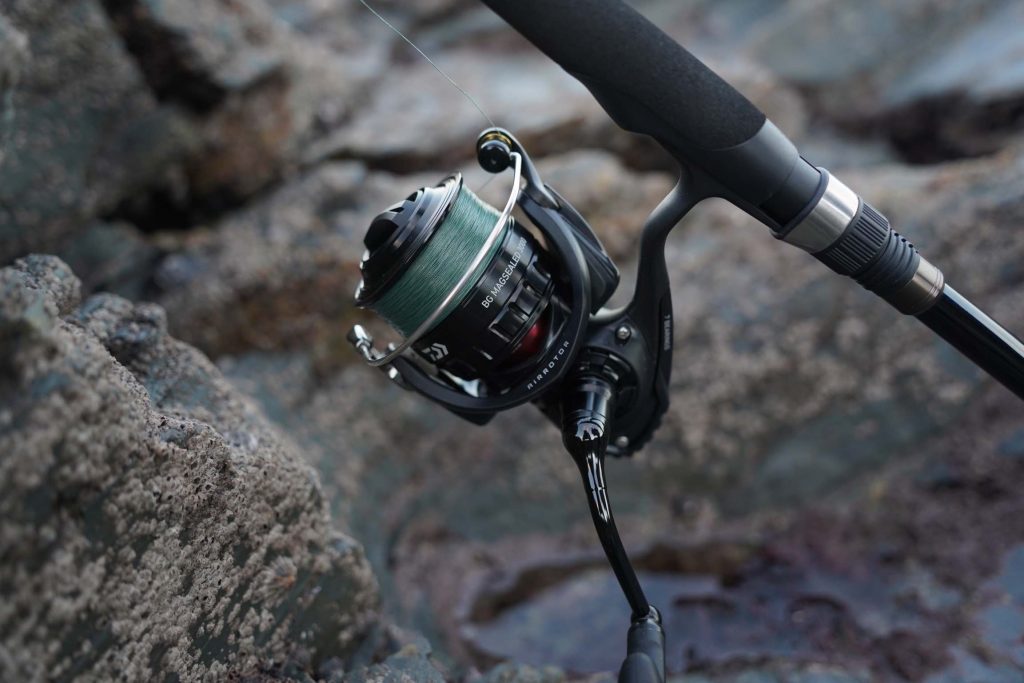
Daiwa has been making reels since the 50s and they haven’t sold out like a lot of other brands. If you study the Japanese methods for process improvement in their factories you’ll understand why many consider Daiwa reels to be in a league of their own.
Although to most this will be a luxury reel, if you fish rough seas and are getting sprayed with salt all the time, or surf fishing and occasionally dunking your reel, or targeting very big fish that would literally blow the drag on a regular reel, then reels like this are a requirement. For most UK anglers, this probably is not a requirement, but for some, it might be.
The Daiwa BG comes as a mag-sealed version (shown in the photo, but sadly discontinued) and there other reel from the BG range, which still has some mag-sealed tech but isn’t as thoroughly protected.
The Diawa BG MQ is still a next-level reel that is the stuff of anglers’ dreams. Perfect for serious lure anglers that fish rough coasts, from a kayak or from boats that drive spray onto their gear. Also good for those that simply want the best kit so their lil’ kid can inherit something from them other than their bad habits. I would still rinse with fresh water and aim to minimise salt exposure where possible.
If you are stuck between sizes, go for the smaller size. It’s a heavy reel relative to its size.
Penn Slammer IV & Authority
Penn’s high-quality workhouse
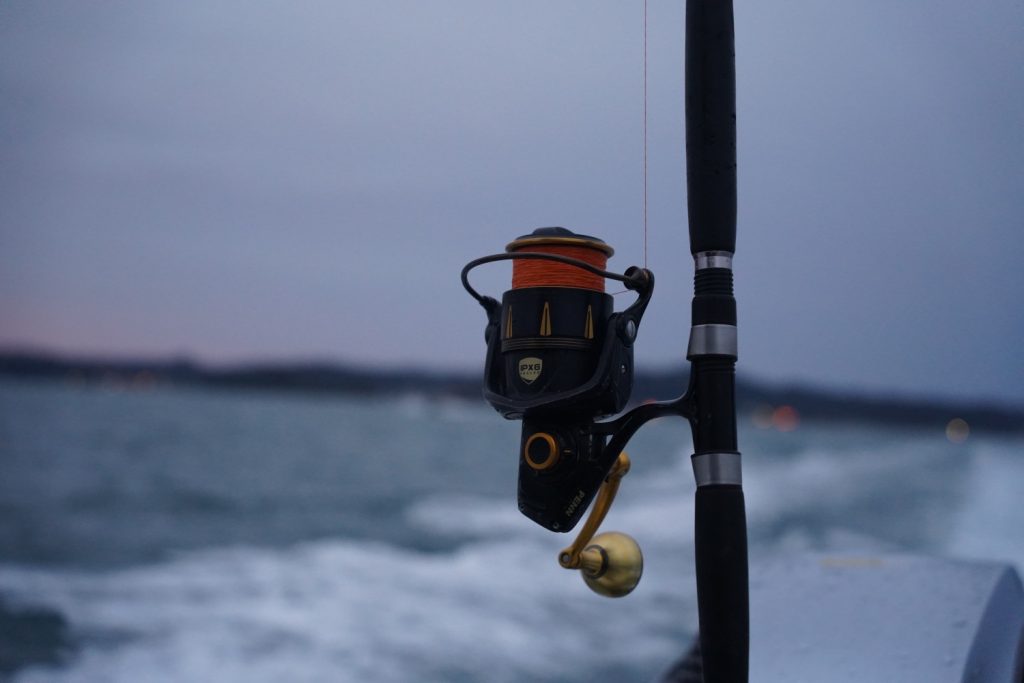
These reels are tough. They might not be as light as a Shimano or as smooth as a Daiwa, but they are tough. That isn’t to say the reel isn’t smooth, it’s just not as smooth as Daiwa or Shimano reels of the same price. This reel not a super lightweight reel, with the 2500 size weighing in at 310g – in our recommendations across the site, when we say ‘a 3000 size Penn reel, in this case a 2500 would also work fine). Perfect for rock or surf fishing for bass where the saltwater spray will inevitably make its way on and into your reel. In fact, Penn tests the reels water resistance by spraying it with a power hose and seeing how much water makes its way inside… The body and spool are rated to IPX6. This means the body is resistant even to high-powered jets of water. If you fish in spray (either from the wind or engine on a boat, from the surf on a kayak, or just from rock fishing near white water), this is worth looking at.
We’ve seen these reels catch 20lb skipjack tuna with ease. These reels are designed to handle big fish, with an upgraded drag compared to the Penn Spinfisher. We generally don’t need that kind of drag in the UK, but it’s pretty nice to have.
If you want to level the slammer up, the Authority does exactly that but is completely excessive for the fish we have in the UK (if we’re talking about value-add for British sea fishing – I know this won’t stop anyone that’s looking for the best…)
Shimano Vanford 3000
Shimano’s most popular reel

Incredibly light and smooth. with the 3000 size weighing in at just 180g! Crazy light. Beautifully smooth and quiet. Excellent line lay, like all the high-end Shimano reels, they are ready to go out of the box. This really is a lovely reel. The only weakness is it might not be as durable of dunkings as some of the more hardy reels in this price point.
This reel is ideal for someone who is looking for a really lightweight setup. Perfect for an estuary or rock fishing rod. This is a reel we haven’t tested directly ourselves yet, but they have been recommended to us personally by some obsessive anglers.
PENN Spinfisher
Best bass reel by popularity in the UK
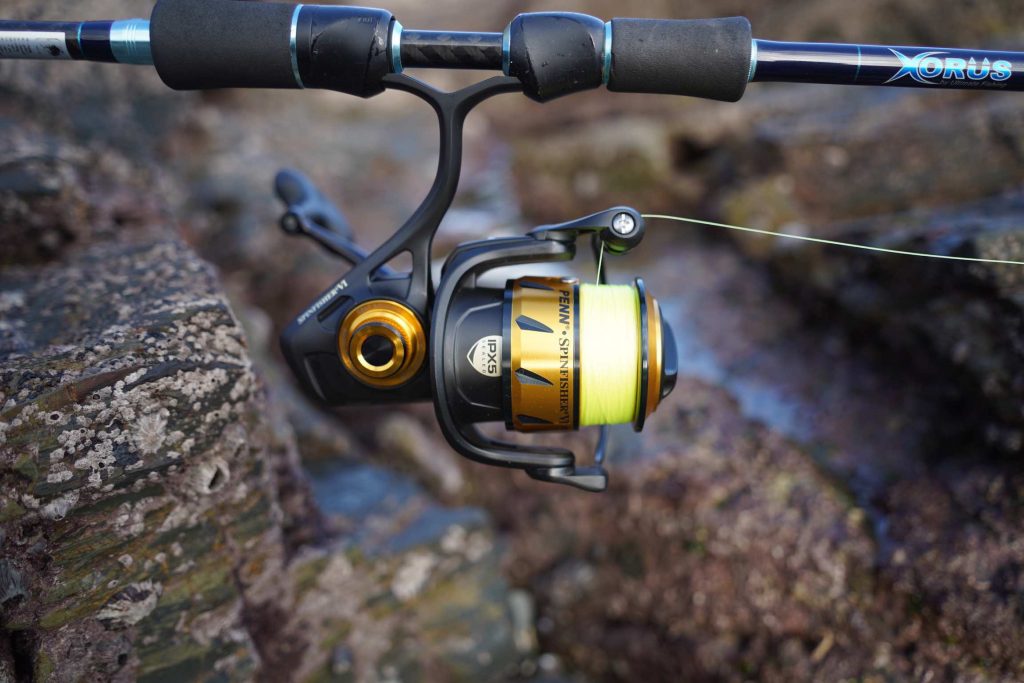
Penn’s Spinfisher is one of the most popular fishing reels of all time and for good reason. All PENN reels have that characteristic powerful feeling that a lot of people like, and at this price point, you get a reel that still feels smooth and sleek despite being a complete workhorse. It is slightly heavier than some similarly priced reels from Shimano or Daiwa. If you’re going to be cranking larger bass lures for instance or fighting fish over the roughest ground, then the extra power could prove useful. This reel does it all, so if you’re serious about fishing for bass and other species with lures from the shore, this is a reel for you to own that is likely to provide a life service if cared for.
PENN Spinfisher – the most popular premium bass reel
The PENN Spinfisher is probably the most successful bass fishing reel in the UK and one of the best-selling reels of all time. It holds legendary status for its drag system that can handle very big fish and its ability to be dialled in with the utmost precision. As the line is released from the reel, it comes out much more consistently than with lower specs. This means you’re less likely to experience snap-offs, hook pulls or rod breakages when a fish goes off on a mad run. This is essential when targeting big fish on light tackle. Admittedly, these features are rarely needed for UK shore fishing for bass, but it’s good to know you’re prepared for that fish of a lifetime!
The IPX5 sealed body on this machine gives you some level of saltwater protection compared to other reels. This is the big selling point, as for many anglers salt exposure in their bass or spinning reels is inevitable when fishing near white water. If you buy a £70 reel and kill it with salt and replace it, you’ve ended up spending more money than if you’d just bought a decent reel to start with, and this has happened to me personally several times in the past. It’s more saltwater resistant than most, but dunking is not recommended!
Just make sure you don’t over-spool this reel, as it does not handle being overfilled. It works best when you underfill your spool a tiny bit.
Shimano Sedona
Shimano’s best mid-range spinning reel
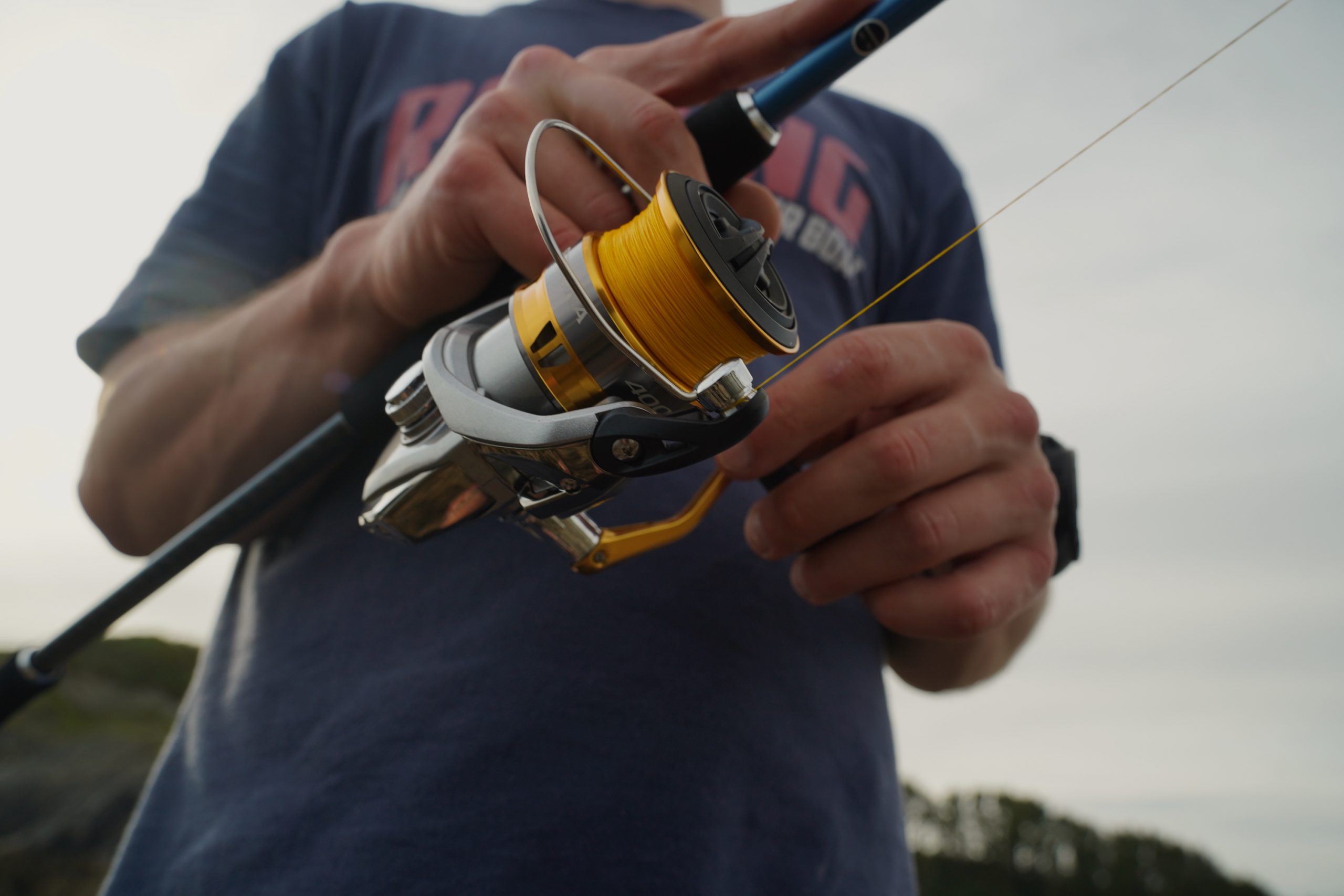
The Shimano Sedona is a reel that performs flawlessly. It’s not necessary to buy a reel like this to catch fish and everybody knows that, but after they’ve used a reel that’s a bit more premium, people don’t seem to care.
We are in the process of testing this reel and landed bass to 5lb on it, which allowed us to enjoy the smooth drag. In terms of robustness it’s got everything you need. Not as tough as a similarly priced Penn reel but much smoother and more refined in your hand. Perfect for those that enjoy the lighter side of lure fishing and enjoy playing fish with refined gear.
PENN Fierce
Best mid-range Penn modern spinning reel
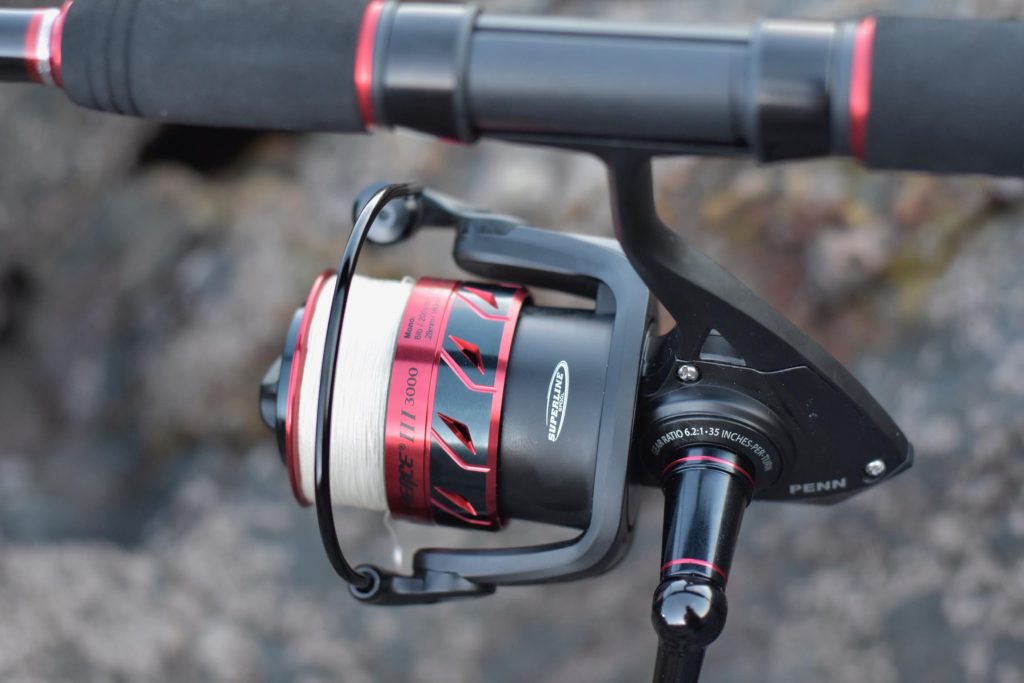
The Penn Fierce is a sensibly priced reel that just does its job extremely well and performs consistently. Penn design reels with fewer components than brands like Shimano, and many like this simple, sturdy design and aesthetic in hand.
In some countries, your chosen reel brand is chosen by your family. Whatever your father or grandfather used, you will carry on using, because there is that much brand identity with some of these manufacturers. PENN is the main reel brand with that kind of devoted following.
These reels are minimalist not just in their outward appearance but in their design too. The design philosophy of Penn is to make the reel out of the least number of moving parts possible and focus on strength. They market the reels as tough saltwater spinning reels. They are a little bulkier than Daiwa reels or Shimano reels of the same size. In the 3000 size, you have an excellent mid-range bass reel, that is going to be reliable and go the miles, provided it doesn’t get dunked in the salt water, which can screw over any reel that isn’t over £100 and mag sealed.
If you are considering the Penn Fierce vs a Savage Gear reel, bear in mind that the Penn Fierce has a deeper spool and larger line capacity, as well as a full metal body construction.
FISHMAG recommends Penn reels to everybody, except LRF anglers. We don’t think Penn reels offer the same delicacy in their line lay as Daiwa or Shimano reels when fishing with the very smallest sizes – size 1000. Otherwise, a great spinning reel at a sensible price.
Daiwa Ninja Reel (3000 or 4000)
Best mid-range fishing reel

Daiwa is arguably the best reel manufacturer in the world, and this is their most accessible high-end reel. Some prefer Shimano, and some prefer Penn, but Diawa makes reels that are deadly for lightweight lure fishing and often have more compact designs than their Shimano counterparts. The quality of a reel like this puts it in a different category altogether from most reels you will see on the typical harbourside in summer.
The Daiwa Ninja Reel is a modern specialist spinning reel that pairs perfectly with a bass rod or light spinning set outfit. Paired with a rod from the same company, you are in for a high-end lure fishing experience at a mid-range specialist price point. An added perk of this reel is it comes with a spare spool, great if you want to changes lines quickly. This is the best reel we have tested at this price point.
Savage Gear SG Range in size 3000
The smoothest low-cost reel we’ve used
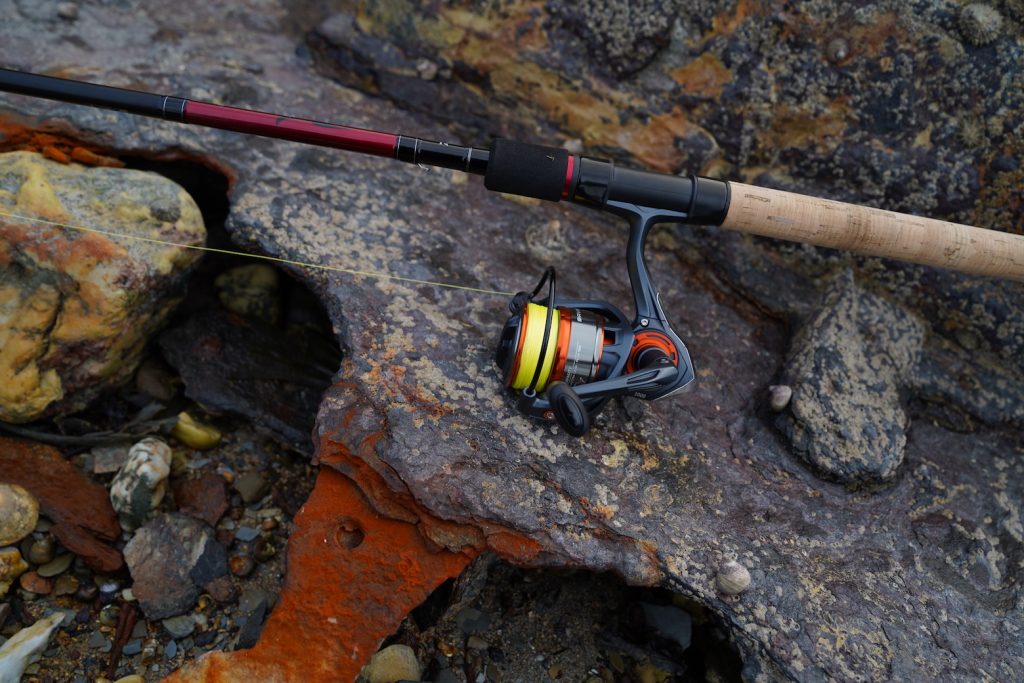
We were very curious to test the Savage Gear SG2 3000. Savage Gear are relatively new as a brand, but are owned by Pure Fishing, which also owns Penn. It appears to me that this reel is an attempt to create something smooth, light and sleek – attributes I normally associate with Daiwa and Shimano reels.
Indeed, the reel is very, very smooth for its price. Really extraordinary. The build quality is fine, but the handle feels less robust than others at this price point. We are not confident in the reels saltwater resistance, so this might suit somebody that lives inland and does a lot of perch fishing but wants something they can also take lure fishing on calm stretches of coast where the splash risk is low. Excellent for the price, anglers that are suckers for smoothness will love this.
EDIT: not recommended for saltwater fishing due to reports from readers of poor saltwater resistance
PENN Pursuit IV Spinning Reel
Best mid-range work horse – full review here
PENN is a brand every sea angler has heard of, and they’ve become known as a producer of timeless classics in the world of high-end rods and reels. This reel is noticeably heavier and more robust than most other reels on the market at its price point. As you’ll see if you watch the above video, we tested it pretty extensively in the UK, NZ and Mexico.
The graphite body is sturdy and durable and allows the reel to be sold at a bargain price point. It is not a ‘sleek’ reel, but it has a sturdy, reliable quality to it. Reels should not be submerged in salt water, but I have submerged mine and it functions to this day to my joy and surprise. Get the 3000 size for an 8ft rod. 4000 for a 9ft rod. The 5000 is more suitable for a heavier lure rod that casts up to 80g+ (not much use for most UK sea fishing). I used the 5000 on a 9ft rod that cast up to 80g and it balanced well, it could work on something 10ft also.
Shimano Catana
Good value reel for working with light braided lines
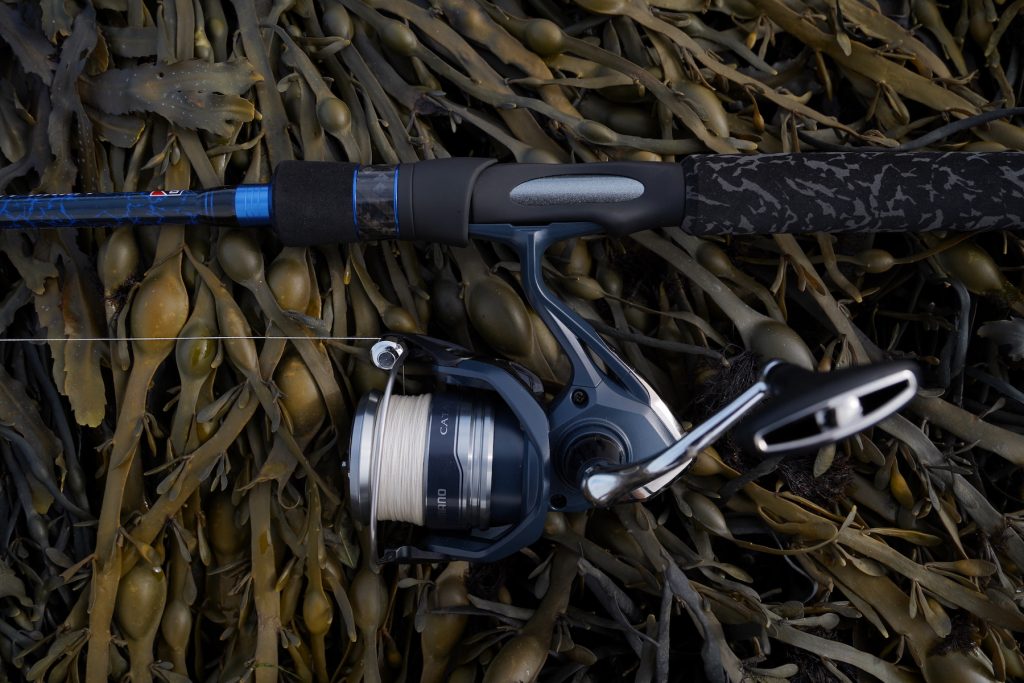
The Shimano Catana was the reel I first used when experimenting with LRF fishing. I was impressed with the line lay with such light lines, which is something a lot of reels out there struggle with (wind knots, birds nests etc).
This reel is neat and compact and satisfying to fish with. I’d reach for this for a ‘sensibly priced’ LRF kit or light weight spinning kit if you plan on using the lightest lines. We playing about with the latest version of these at the moment. I know of one Catana reel that has had four owners, all of whom were keen anglers on a budget, and each used it for a while before moving on to fancier reels. It’s amazing how well it lasted.
Daiwa Crossfire
Best budget spinning reel from Daiwa
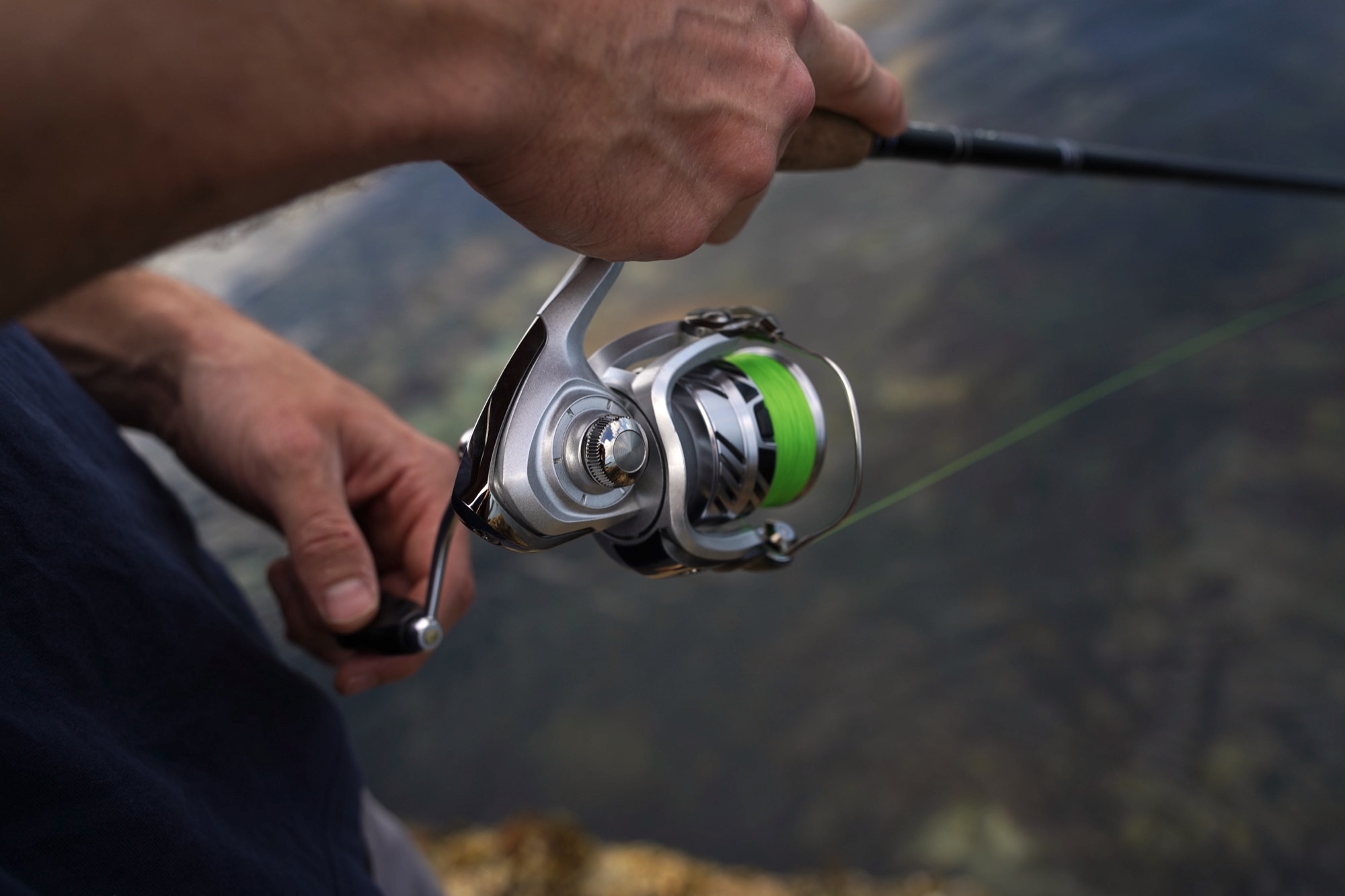
Daiwa’s Crossfire is a solid option and feels like the entry-level to the world of high-end lure reels. Certainly a lot of bang for your buck. Compared to cheaper models, the Crossfire can handle advanced braided mainlines and lighter fluorocarbon lines when freshwater fishing for species like perch or trout.
One of the most attractive and high-functioning reels at its price point on the market.
Shimano FX 3000 (for pairing on light lure rods, casting up to 35g)
Best budget spinning reel from Shimano
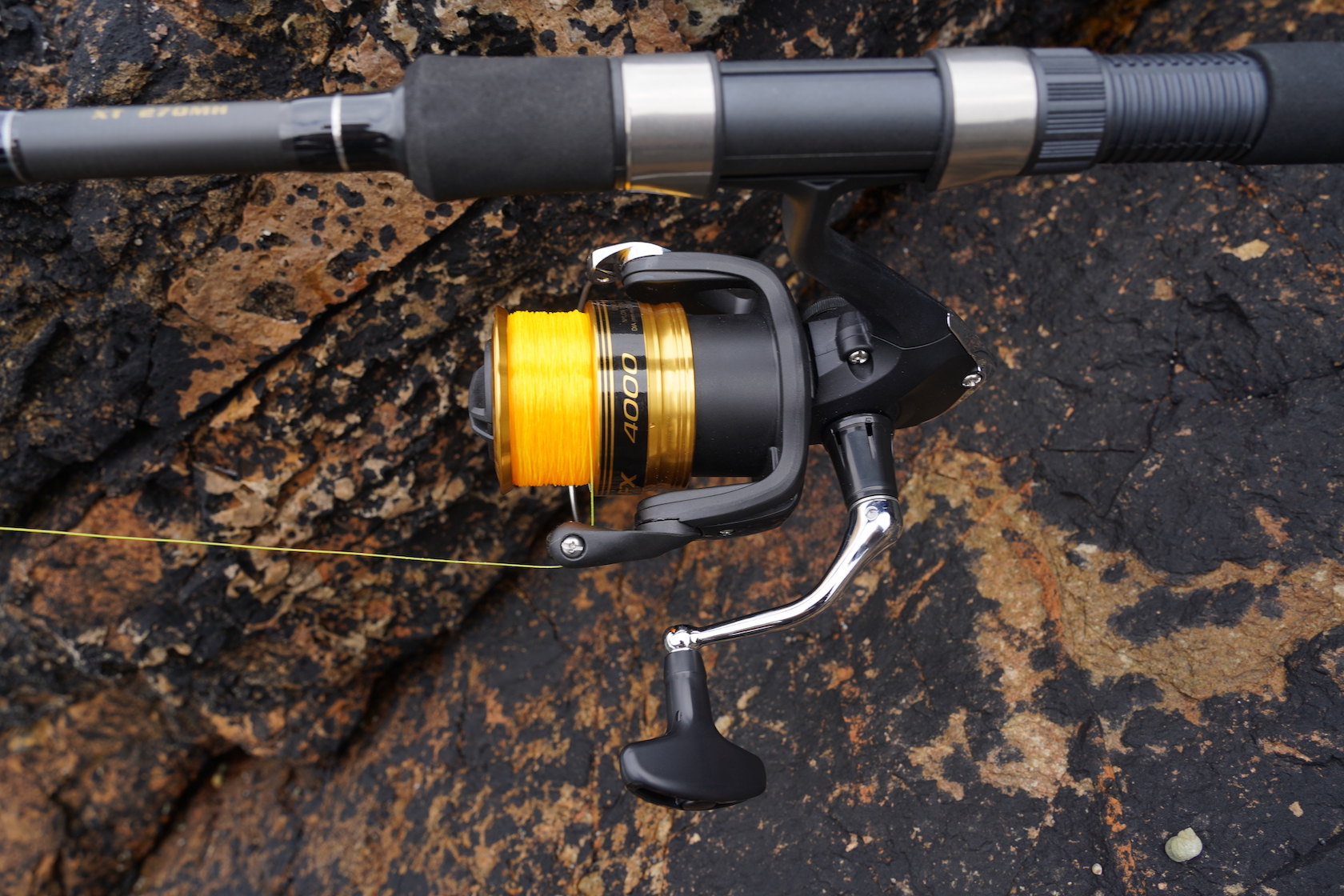
The Shimano FX is one of the best value spinning reels on the market. You get a reel from one of the top 3 best reel brands of all time at a price point that makes Chinese tat redundant. If you want to buy a basic but highly reliable and surprisingly nice reel for its price, this is a safe option. We used to recommend the Daiwa Crossfire but I think this one trumpsDaiwa Crossfire it and is about the same price.
Incredible value. Everyone out there that wants to buy a spinning reel and doesn’t want to spend much money should get one. They’re also perfect for a reel on a second rod as backup or if you want to take a friend fishing and don’t trust them with your slickest reel.
Daiwa vs. Shimano vs. Penn Spinning Reels
Daiwa Reels
Daiwa reels have the best line lay, particularly in their higher end models. These are the best reels in my opinion for modern lure fishing with bass rods or lighter gear. They are valued highly by anglers that use light braid and like the technical aspects of lure fishing.
PENN Reels
Penn reels are work horses and are sturdy and powerful. Typically, they are heavier and less complex internally than Shimano or Daiwa. The idea goes that this means there is less to go wrong. Traditional anglers or those that value robustness and simplicity tend to prefer Penn.
Shimano Reels
Shimano have exceptional reels at every price point. Their lower end reels are shockingly good for the price and the higher end reels are among the best in the world. Line lay is usually fantastic, and they are highly fine tuned. Similar to Daiwa, but noticeably different from Penn.
Other reels we recommend that aren’t PENN, Daiwa or Shimano.
FISHMAG recommends sticking with Penn, Daiwa and Shimano when buying spinning reels, but this reel from Abu Garcia offers an alternative at a budget price point. Many reels that look high quality have poor-quality internal parts, whereas, with the aforementioned brands, you’re safe.
When people spend £25 on a reel, they usually buy from a random Chinese brand on Amazon or from a classic brand that sold out ages ago and lost its way. People new to fishing will use reels like this without realising just how much the product sucks. Many will think the line tangles they’re getting in are caused by their own inexperience, where in fact it’s often caused by cheap kit.
If you’re looking for a super cheap reel that is functional, will last and works – the Shimano FX and the Daiwa Sweepfire are functional cheap reels. Not amazing, but functional – and that means they’re the best reels out there for £25.
If you buy the Abu Garcia Cardinal X Spin, don’t try using a high-end braid with it, as the line lay on the reel might not be able to handle the fineness of the line. Instead, reach for some 10lb J-braid or Power Pro or else a fluorocarbon mainline. Given that you’re using a slightly heavier line than would normally be recommended, you should then also increase your lure weight a bit to increase line tension and reduce the chance of line problems.
Basically, if you’re using a budget fishing kit, you don’t want to try to fish too light, as lighter kit brings out the limitations of cheaper tackle. Equally, casting lures that are too heavy will screw your reel.
If you’re going to spend £25, do not buy one of the fancy-looking ones on Amazon from a random brand – they’re all flashy junk. This reel offers a functional alternative at an entry-level price point. You don’t need to use flash kit to catch fish.
Spinning Rod and reel combo’s
Buying a rod and reel combo solves the big problem of ensuring that the reel you buy is perfectly balanced with your rod. Note that while telescopic rods and rods that break down into more than 2 pieces are easy to transport, they are much more prone to snapping so drags need to be set more conservatively when fishing with these rods. I would recommend avoiding those except for fishing on holiday, where their usefulness justifies their limitations.
What reel to go with X rod?
Once again, my advice, if you’re buying a rod and reel combo, is to choose one made by PENN or DAIWA. This is fairly conservative advice because there will be other good options out there, it’s just that if you stick with these brands you are in safe hands.
If you are looking for a simple rod and reel combo for mackerel feathering, then you’ll want something long and strong. Quality is less important, but if you go for a PENN rod and reel combo that casts a couple of ounce, you’ll be fine with feathers and you’ll get something high quality, too.
What are the actual performance differences between low end and high end spinning reels?
The biggest difference in performance comes from line lay and the drag. Reels with poor line lay result in tangled lines. On a spinning reel, poor line lay prevents you from fishing with lighter lines that may be required if you wish to cast further or fish with lighter lures and rigs. A cheap drag doesn’t let out line at a consistent rate and may require a lot of initial tension before it releases any line at all. Reels like that will result in lost fish, but can be quite a laugh to fish with if you have the skill to work around their limitations and make them work!
Mid range reels that cost about £60-70, in my opinion, have no limitations or performance disadvantages in comparison with super high-end reels. You may get even better line lay with even fewer tangles by splashing more cash, but I’ve never had a tangle on my £70 reel with 8lb braid.
That doesn’t mean there aren’t any differences between the mid-range and the high-end. Reels genuinely do keep on getting better and better even up to £300. The difference is phenomenal. My advice which applies to most forms of consumption would be to buy what gives you the performance you actually need and avoid spending extra for thrills – BUT do not even touch the high-end kit because if you do it will make your perfectly functional mid-range reel feel like cheap crap. Quality is relative. I got used to borrowing a friend’s reel that cost about £250 and was a Japanese import and then went back to my mid-range £70 Shimano and was quite shocked at how cheap it felt, despite being an excellent reel.
Here’s an example.
Spinning Reel Sizes – full guide here
1000 Size = LRF – super lightweight lure fishing with very light lines like expensive 8lb braid or 4lb fluorocarbon line. Balances on rods that cast under 15g (less than half an ounce).
2000/2500 Size = Still only appropriate for super lightweight rods that cast less than 21g and are under 8ft. This is a specialist size that will only match with LRF and HRF rods.
3000 size = the same reel body as a 2500 but with a larger spool with more line and more power. Perfect for rods that cast up to 28g and are about 7-8.5ft.
4000 size = perfect for bass fishing with rods of around 9ft casting about one ounce (30-60g max) or for use with an entry-level spinning rod between 7-9ft which is likely to be thicker. This size is for using lures that weigh over 20g, which most traditional lures are. I recommend this size reel as a great general-purpose size for people new to fishing. This size is going to balance well with rods that are 7-10ft like catching bass and other serious predators that require some bullying. A very versatile size, you won’t be disappointed if you’re looking for a simple spinning outfit.
5000 size = heavier lure fishing with 2oz / 50g weights and the largest bass and pike lures on rugged coasts with 10ft lure rods. This is great when you need power, long casting distances and something that can handle your big plugs and 20lb braid. Great for landing monster pike and monster bass or for match fishing when you want extra distance in your cast. Also as it happens, a good size for using mackerel feathers on a very heavy 10ft spinning rod.
Choosing a spinning reel
A quality reel is a pleasure to use and is very different from most reels you’ll see in tackle shops around the country.
The key difference, asides from being smoother, nicer to use and more durable, is that they lay line in a way that prevents tangles and allows you to cast further. Cheaper reels cannot be used with higher-quality braids, because most reels are not designed with super-fine lines in mind. For this reason, if you want the best fishing experience you will need a reel that costs at least £50. Reels below this price point will limit the fishing styles you can use. You won’t be able to fish effectively with lightweight lures (below 1oz) or heavier tackle (over 3oz).
If you just want to catch some mackerel with feathers, then there is no need to spend more than £30 on a reel. Higher quality reels are required for more advanced beach casting rigs and for spinning with single lures. Casting 3oz leads is something that any reel can do well enough. It’s when you start putting on heavier rigs, lighter rigs, and nicer lines that you need something more specialist and advanced.
If you want something cheap and cheerful that just gets you out by the water and does its job, that’s fine too. It can be good to have a reel that you aren’t too fussed about taking on a kayak for instance. There are imitation reels out there that are decent quality for the price and are fine for most sea anglers. Do consider though that spending an extra £20 could get something that might last a lifetime if looked after and be much nicer for you to use. For occasional mackerel bashing, cheap is no problem. For using lighter weights such as when spinning or float fishing, you’ll appreciate a superior product. For using very heavy leads and fishing at range over mud flats and beaches, you’ll also want superior line lay to maximise your casting distance and power of retrieval.
The big leap forward is going from something you picked up for £30 from the tackle shop to getting a mid-range Shimano, Penn or Diawa and putting some decent line on it. When I started fishing and used a cheaper kit I thought I got in tangles and bird nests because I was new to fishing but in fact, my reel just had crap line lay and my line was too thick for the size of the spool, resulting in coiling. Sometimes when the ‘poor workman blames his tools’ he’s damned right. Using a lighter line or braid and a half-decent reel makes a world of difference.

